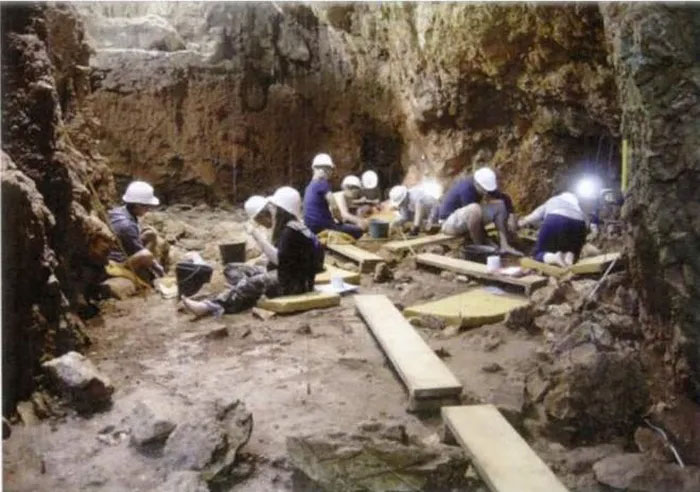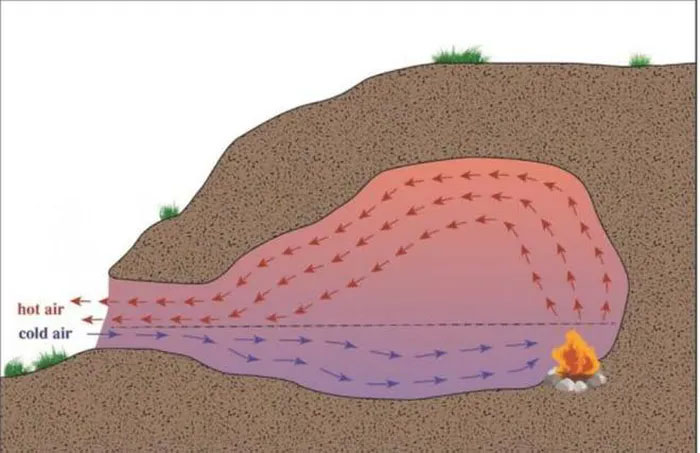A new study conducted by archaeologists on prehistoric times at Tel Aviv University in Israel has revealed secrets about how ancient humans (living approximately 150,000 to 170,000 years ago) used fire in caves.
The archaeological data was collected at the Lazaret Cave in France, which is also the first site where prehistoric humans resided during the Paleolithic era. Excavations have demonstrated that “the cave dwellers” consistently chose similar locations over centuries to place their communal fires. This indicates that their choices were based on logical calculations rather than random selection.

Excavation images from Lazaret Cave, France.
Through these studies, archaeologists at Tel Aviv University have been able to validate the accuracy of this theory. Prehistoric humans selected fire locations based on their understanding of the characteristics and properties of fire. They lit fires in suitable spots to maintain a comfortable living environment in the cave, where they could safely shelter from the harsh weather outside.
Calculating Smoke Flow in Caves
In the past, studying how smoke moves within caves was a very manual process. This required researchers to physically visit the caves and light fires. They would then conduct calculations and measurements to determine the smoke’s trajectory. Fortunately, with advancements in technology, we now have a more effective method.
Accordingly, scientists used simulation software to model smoke dispersion to recreate this activity. In this way, researchers at Tel Aviv University were able to accurately calculate the smoke’s reach across 16 hypothetical fire-testing locations.

Image depicting smoke dispersion in a cave.
Smoke rises to the cave’s ceiling and moves towards the entrance. The arrows symbolize the direction of airflow, while the dashed lines represent equilibrium points between hot and cold air flows.
Through careful calculations, researchers identified a perfect spot for a long-term fire. If a fire were lit here, people could sleep next to it without worrying about suffocation. This area occupies less than 10% of the 290m2 cave and is close to the cave’s center. Remarkably, this area exactly coincides with the identified fire site in Lazaret Cave.
What is the Main Reason Behind Ancient Humans’ Remarkable Ability?
According to researchers, trial and error alone were not sufficient to determine the fire placement of prehistoric humans. If this were true, archaeological remains would show fire residues in many random caves. However, we only find fire remains in specific locations. This proves that fire makers had certain calculations and consistency in their decisions.
“Our simulation of smoke density in Lazaret Cave clearly shows that Upper Paleolithic people had the ability to choose perfect locations for their fires,” the archaeologists wrote in the Scientific Reports. “This ability reflects their experiences, intelligence, and premeditated actions.”
Additionally, a crucial factor is the strong survival instinct of humans, which drove them to continuously learn and seek out suitable living environments.


















































